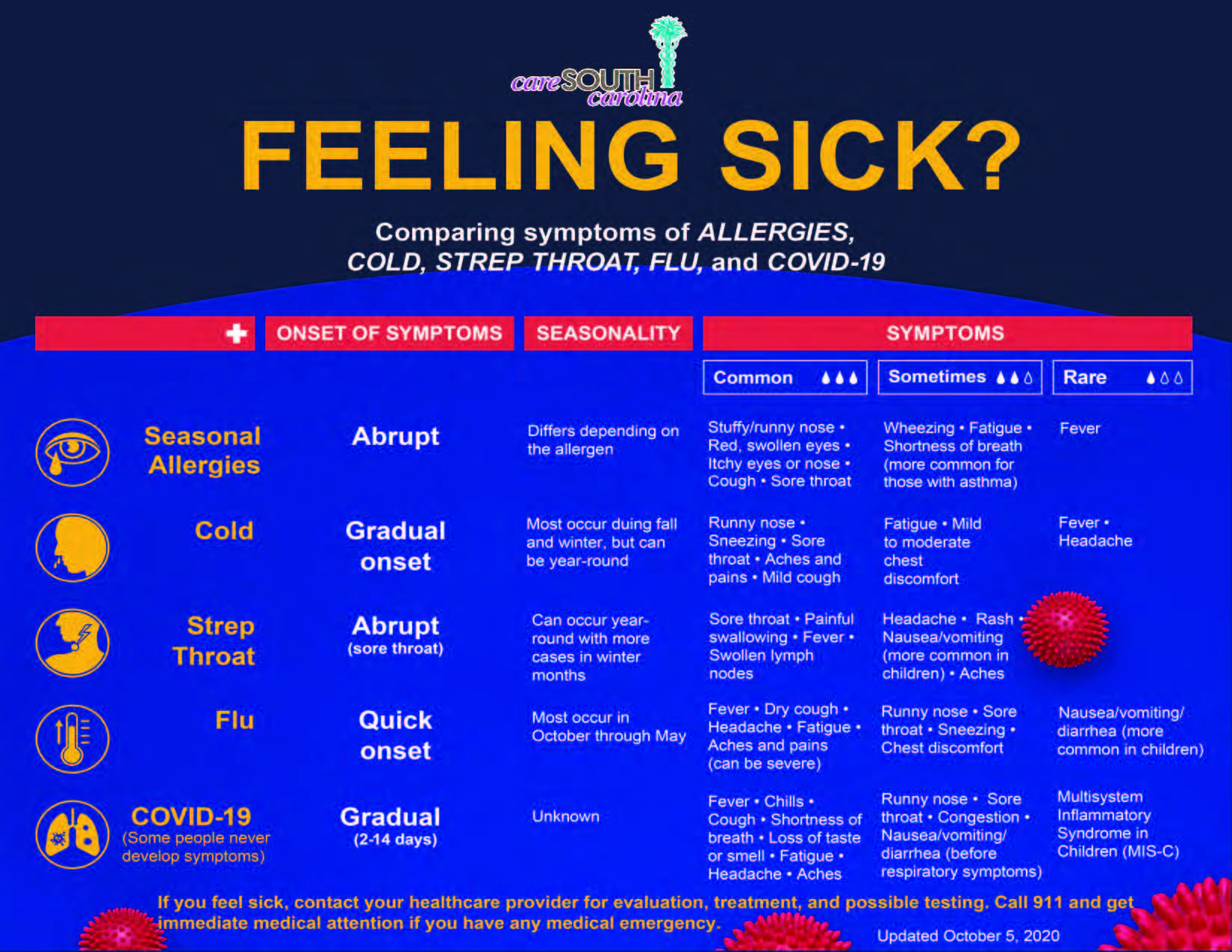
Feeling Sick? Comparing symptoms of Cold, Strep, Flu & COVID-19
As we progress towards Flu Season amidst the COVID-19 pandemic, it can be difficult to tell the difference in symptoms between influenza, COVID-19, and even strep throat, a cold and simple seasonal allergies.
Influenza (Flu) and COVID-19 are both contagious respiratory illnesses, but they are caused by different viruses. COVID-19 is caused by infection with a new coronavirus (called SARS-CoV-2) and flu is caused by infection with influenza viruses.
According to the Centers for Disease Control (CDC), there are some key differences between flu and COVID-19.
COVID-19 seems to spread more easily than flu and causes more serious illnesses in some people. It can also take longer before people show symptoms and people can be contagious for longer.
Another important difference is there is a vaccine to protect against flu. There is currently no vaccine to prevent COVID-19.
In a bad flu season- which peaks from December to February- 40 million to 50 million Americans may catch the flu, with some 800,000 requiring hospitalization. When that’s combined with the ongoing COVID-19 pandemic, there is a concern that hospitals could become overrun and the medical system could reach its capacity.
That’s why health experts are strongly encouraging Americans across the country to get their flu shot. CareSouth Carolina is providing flu vaccinations at all of its medical clinics. Anyone can get a flu shot and you don’t have to be a patient of CareSouth Carolina to get the vaccine.
The CDC has also advised that anyone who has had COVID-19 can still get the flu vaccine as long as they are not in their current 14-day quarantine window.
“We are encouraging people to get their flu shots for this coming flu season,” CareSouth Carolina Chief of Nursing Tracie Thigpen said. “The CDC is recommending getting this shot to help combat the spread of respiratory illness during this fall and winter. The flu shot is important to help protect our vulnerable populations from illness.”
The best way to prevent infection is to avoid being exposed to the virus.
Because some of the symptoms of flu and COVID-19 are similar, it may be hard to tell the difference between them based on symptoms alone, and testing may be needed to help confirm a diagnosis.
Typically, Flu has a quick onset of symptoms and most occur between the months of October through May. Fever, dry cough, headache, fatigue, aches and pains are common while runny nose, sore throat, sneezing and chest discomfort are sometimes observed. In COVID-19, symptoms tend to be more gradual and include but are not limited to: Fever, chills, cough, shortness of breath, loss of taste & smell, fatigue, headaches, chills and is sometimes accompanied by runny nose, sore threat, congestion, nausea, vomiting and diarrhea (before respiratory symptoms).
While more is learned every day, there is still a lot that is unknown about COVID-19 and the virus that causes it.














